
John Hardy Isakson was an American businessman and politician who served as a United States senator from Georgia from 2005 to 2019. A member of the Republican Party, he previously served in the Georgia legislature and the United States House of Representatives.

The 1932 United States Senate elections coincided with Democrat Franklin D. Roosevelt's landslide victory over incumbent Herbert Hoover in the presidential election. The 32 seats of Class 3 were contested in regular elections, and special elections were held to fill vacancies.

The 1980 United States Senate election in Georgia was held on November 4, 1980. Incumbent Democratic U.S. Senator and former Governor of Georgia Herman Talmadge ran for reelection to a fifth term, but lost narrowly to Mack Mattingly, Chairman of the Georgia Republican Party.

Electoral history of James F. Byrnes, 49th United States Secretary of State (1945-1947), Associate Justice of the United States Supreme Court (1941-1942), United States Senator from South Carolina (1931-1941), 104th Governor of South Carolina (1951-1955) and United States Representative from South Carolina (1911-1925)
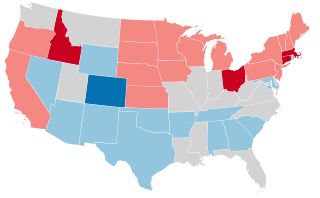
United States gubernatorial elections were held in 1946, in 34 states, concurrent with the House and Senate elections, on November 5, 1946. Elections took place on September 9 in Maine.

United States gubernatorial elections were held in 1942, in 33 states, concurrent with the House and Senate elections, on November 3, 1942. Elections took place on September 14 in Maine.
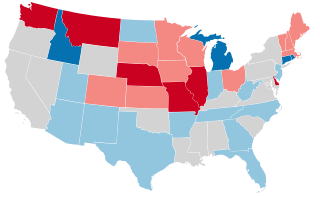
United States gubernatorial elections were held in 1940, in 34 states, concurrent with the House, Senate elections and presidential election, on November 5, 1940. Elections took place on September 9 in Maine.
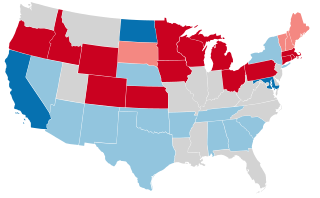
United States gubernatorial elections were held in 1938, in 33 states, concurrent with the House and Senate elections, on November 8, 1938. Elections took place on September 12 in Maine.
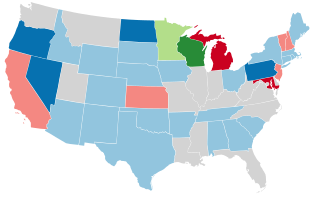
United States gubernatorial elections were held in 1934, in 34 states, concurrent with the House and Senate elections, on November 6, 1934. Elections took place on September 10 in Maine.

United States gubernatorial elections were held in 1926, in 33 states, concurrent with the House and Senate elections, on November 2, 1926. Elections took place on October 5 in Arkansas, and September 13 in Maine.

United States gubernatorial elections were held in 1924, in 36 states, concurrent with the House, Senate elections and presidential election, on November 4, 1924. Elections took place on October 7, 1924 in Arkansas, and September 8, 1924 in Maine.

United States gubernatorial elections were held in 1922, in 33 states, concurrent with the House and Senate elections, on November 7, 1922. Elections took place on October 3 in Arkansas, and September 11 in Maine.

United States gubernatorial elections were held in 1920, in 35 states, concurrent with the House, Senate elections and presidential election, on November 2, 1920. Elections took place on September 13 in Maine.

United States gubernatorial elections were held in 1916, in 36 states, concurrent with the House, Senate elections and presidential election, on November 7, 1916. Elections took place on September 11 in Maine.
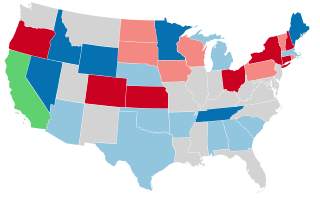
United States gubernatorial elections were held in 1914, in 31 states, concurrent with the House and Senate elections, on November 3, 1914.

United States gubernatorial elections were held in 1912, in 33 states, concurrent with the House, Senate elections and presidential election, on November 5, 1912. In addition, there was a special election in Georgia on January 10, 1912.

United States gubernatorial elections were held 31 states, concurrent with the House and Senate elections, on November 8, 1910.

United States gubernatorial elections were held in 1906, in 28 states, concurrent with the House and Senate elections, on November 6, 1906.

United States gubernatorial elections were held in 1902, in 27 states, concurrent with the House and Senate elections, on November 4, 1902.

The 1998 Georgia lieutenant gubernatorial election was held on November 3, 1998, to elect the lieutenant governor of Georgia, concurrently with the 1998 gubernatorial election, as well as elections to the United States Senate and elections to the United States House of Representatives and various state and local elections. Georgia is one of 21 states that elects its lieutenant governor separately from its governor.




















